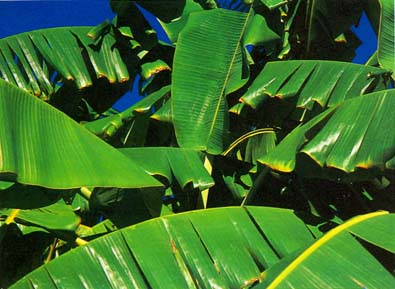In La Unión, a village in northwestern Colombia, the soil is rich and dark. Food crops like corn, beans, yucca, and rice thrive, as do the export crops: baby bananas, cocoa beans, and avocados. The earth gives so much that during the mango season the fruit falls off the trees to rot on the ground. During avocado season, the huge, light-green avocados are so plentiful that the people often feed them to their pigs.
La Unión is one of three settlements of the Peace Community of San José de Apartadó. Seven years ago, villagers caught in the crossfire of Colombia’s decades-long civil war formed the Peace Community to resist forced displacement by warring factions eager to gain control of the strategic and fertile land. Peace Community members refuse to participate in the war in any way. They don’t keep arms, don’t share information or supplies with any of the armed groups, and work together in groups for mutual protection. Despite their obvious vulnerability, the members of the Peace Community insist upon their right to stay on their land, to live in the towns their parents founded, to keep planting beans in the fields they cleared of thick jungle.

The exchange of food is central to the daily life of the Peace Community members. When I visit my friends they always offer me something to eat—an arepa (thick corn patty), a pair of golden mini-bananas, or a plate of rice and beans with a fresh scrambled egg. Through food, they welcome me into their lives. When I receive their offerings, I often pause, my hands wrapped around a small, warm bowl of agua panela (raw sugar water). I have thanked my host, but I also want to give thanks to the universe that brought me to this place – to eat, to share, and to learn. I remember the words of the meal chant I learned as a child at the San Francisco Zen Center: “We venerate the Three Treasures and give thanks for this food, the work of many people and the suffering of other forms of life.” Living in La Unión, I bear witness to where food comes from. I see each day the hard work of many people, and I see suffering also.
During my time in Colombia, I have been able to bear witness both to life in the Peace Community and the alternative: An estimated three million people have been displaced by civil war since 1985, and the vast majority are campesinos (rural farmers) who have uprooted their lives to escape the violence in the countryside. They have fled to the fringes of overgrown cities, where they survive as refugees in their own country, displaced farmers who know with their whole bodies how to cultivate food but instead find themselves on dirt packed down hard by buses and motorcycles
In the large city of Medellín the stylish neighborhoods are in the center, while the poor areas spread outward. La Honda, the last neighborhood before Medellin dissolves into mountains, is the new home of many displaced campesinos from the same region as La Unión. In the words of one resident of La Honda: “In the countryside we were poor, but at least we had enough to eat. We always had everything we needed, even if not everything we wanted. Here we have to go downtown to beg or to dig through the garbage, because there is nothing here, nothing.”
Life in both the Colombian cities and the Colombian countryside is fraught with violence, poverty, and suffering in its innumerable forms. The Peace Community has suffered massacres, disappearances, and other atrocities. They have been displaced and they have returned, filling the same fields with corn stalks and bending rice plants. Their process is one of many tiny sprouts of hope in the troubled Colombian soil.
In La Honda, the soil is not so much soil as a light red clay that sticks to your shoes in muddy streaks. This soil is not for planting anything. But what the displaced farmers know is how to plant, so they try anyway. In front of one old man’s house, with a corrugated tin roof and wooden plank walls, I saw that he was nurturing one banana tree. It was small and not yet bearing fruit. Where this man comes from there are banana trees as far as the eye can see in any direction, with overlapping wide green leaves